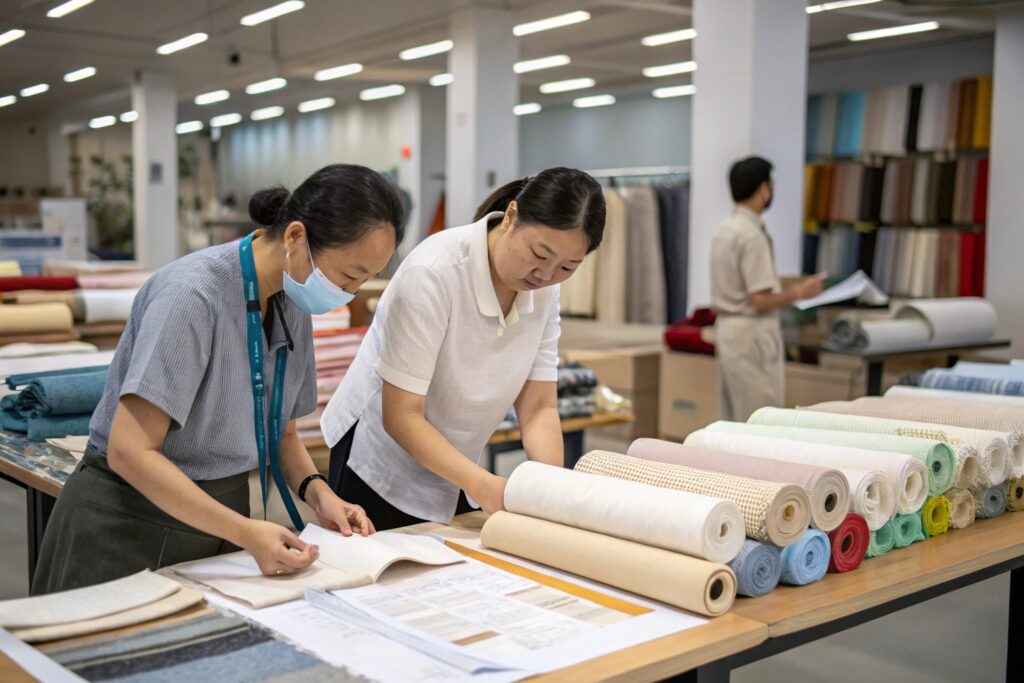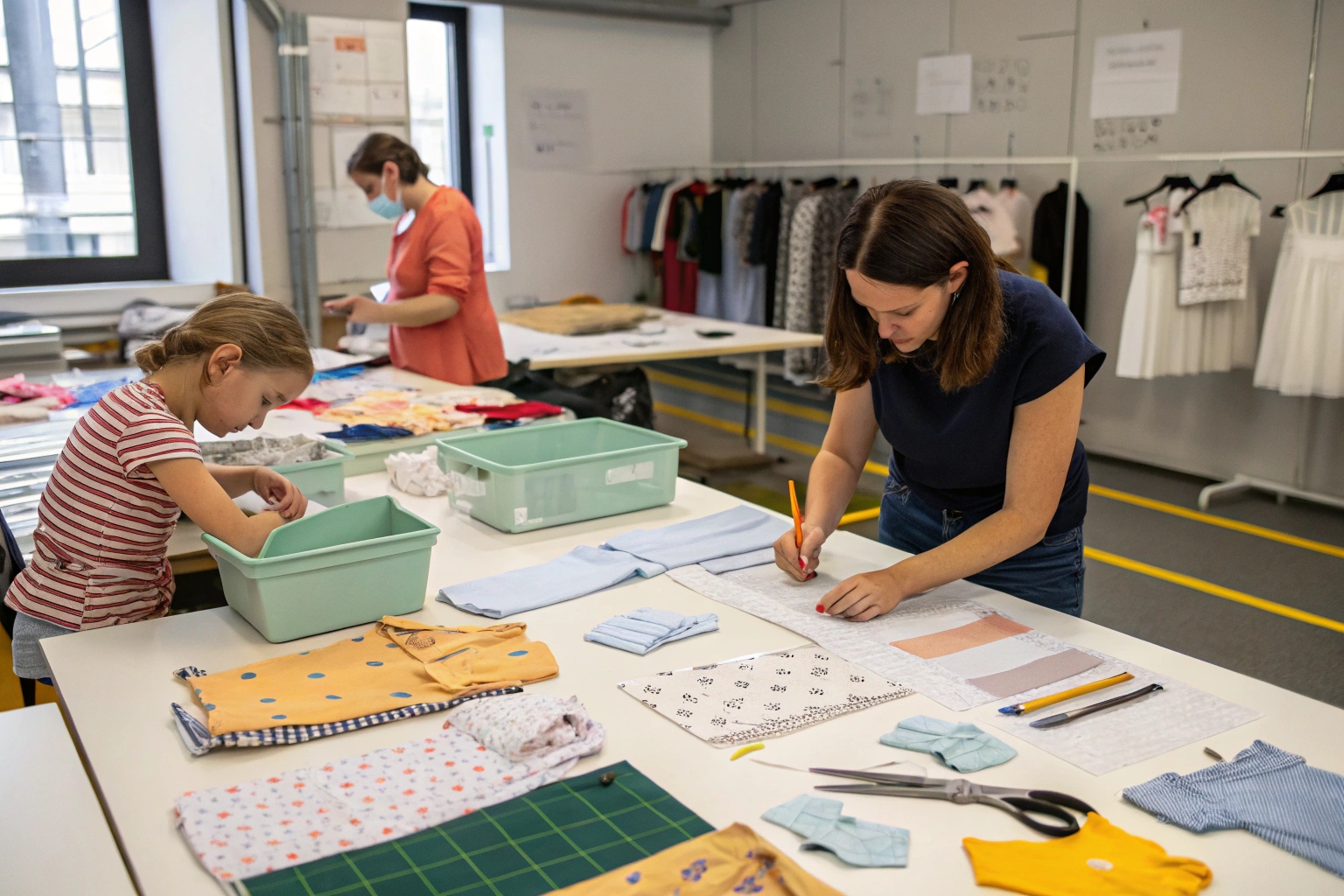Kids outgrow clothes fast—but that doesn’t mean fashion for them has to be wasteful. Capsule collections offer a better way.
Capsule collections support sustainable kidswear by promoting mindful production, minimizing overstock, and reducing waste through focused, limited-run designs.
In working with brands focused on ethical kidswear, I’ve found that capsules provide not just a fashion advantage—but a sustainability roadmap, too.
Reducing Waste Through Limited Production Runs?
Bulk production is easy. Sustainable production is smart. Capsules make it possible.
Limited capsule runs reduce waste by aligning production volumes with real-time demand, avoiding unsold inventory and unnecessary landfill contributions.

How do capsule collections help reduce waste compared to traditional full-line production?
In traditional models, brands create massive seasonal lines—50, sometimes 100 SKUs—based on predictions. Inevitably, some styles flop. Others are over-ordered. The result? Unsold inventory, aggressive discounting, and ultimately, textile waste.
Capsule collections flip the model. You launch just 5–10 styles. Each SKU is tightly curated for the season, trend, and audience. You produce only what you expect to sell in a 30–60 day window. If demand exceeds supply, you restock.
At Fumao, we’ve seen clients cut their unsold inventory by over 60% after shifting to a capsule-based launch strategy. They replaced bulk planning with monthly drops—each built for sell-through, not shelf life.
Why is this especially important in kidswear?
Kids grow fast, and fashion preferences shift even faster—both from the parents and the kids themselves. If you overproduce, you’re left with inventory that’s not just off-trend, but also outgrown by your customers.
Capsules allow brands to:
- Launch smaller batches tailored to fast-changing sizes
- Adjust design and sizing more frequently
- Avoid deep discounts that erode brand value
By reducing waste through tighter cycles, kidswear brands not only lower environmental impact—they improve financial sustainability as well.
How Capsules Align with Eco-Friendly Sourcing?
Sustainability starts before a single stitch is sewn. Capsule thinking brings sourcing into sharper focus.
Capsule collections encourage intentional material choices, favoring sustainable fabrics and transparent sourcing over bulk-driven shortcuts.

How do capsules make eco-friendly sourcing more practical?
Large collections often force brands to source a wide variety of fabrics, trims, and treatments—many of which may not meet sustainability standards. Capsules do the opposite.
When you only need 3–5 styles, you can:
- Choose GOTS-certified organic cotton for all pieces
- Focus on recycled blends for fleece or outerwear
- Work with dyers and mills who use non-toxic processes
And because you’re producing less, you’re more likely to afford better materials—even at a higher cost per meter. We’ve helped clients produce 500-piece capsules using premium bamboo-cotton blends that wouldn’t be affordable in a 50-style line.
How does a factory like Fumao support sustainable sourcing for capsules?
We maintain a library of low-MOQ sustainable materials—from organic cotton jersey to RPET blends. Clients can build capsule collections using these pre-sourced options without waiting for 60-day lead times or hitting 1,000-yard minimums.
Here’s a snapshot of what’s available for capsule sourcing at Fumao:
| Fabric Type | Certification | MOQ | Capsule Suitability |
|---|---|---|---|
| Organic Cotton Jersey | GOTS | 300m | Tees, rompers |
| Recycled Polyester Fleece | GRS | 250m | Hoodies, joggers |
| Bamboo Viscose Rib | OEKO-TEX | 200m | Onesies, leggings |
This setup helps brands avoid compromises between sustainability and practicality. And because it’s all integrated, you spend less time chasing paperwork and more time designing.
Minimizing Overproduction in Children’s Fashion?
Overproduction is one of fashion’s biggest polluters. Capsules fight it with intention.
Capsule planning minimizes overproduction in kidswear by focusing on demand-based design, responsive production cycles, and real-time market feedback.

How does capsule planning prevent the waste caused by guessing demand?
Traditional forecasting means ordering thousands of pieces based on last year’s numbers or outdated market trends. In contrast, capsule planning is built on:
- Short cycles (launch → test → restock)
- Smaller orders (200–500 pieces per SKU)
- Flexible reorders based on live sales data
At Fumao, we work with clients to launch what we call “micro capsules”—pilot collections of just 4–6 SKUs. They monitor performance over 2–3 weeks. If a product takes off, we start restock production the same day. If not, the brand pivots—no waste, no guesswork.
Why is real-time adjustment so important in kidswear?
Unlike adult fashion, you can’t always carry forward unsold styles in kidswear. By next season, that 2T size is now too small for your target buyer.
Capsules make it easier to:
- Identify fast-movers early
- Cut SKUs that don’t perform
- Reallocate inventory geographically (e.g., cold vs warm markets)
This model not only helps brands sell more—it reduces the raw material consumption and factory emissions associated with unused inventory.
Sustainable Packaging and Logistics for Capsules?
Sustainability doesn’t end at production—it extends to packaging, shipping, and delivery.
Capsules support green logistics by reducing packaging volume, favoring recycled materials, and optimizing transportation cycles.

How can capsule brands reduce packaging waste without sacrificing branding?
Capsules give you a chance to be intentional. Since the product count is lower, you can:
- Use recycled polybags or compostable mailers
- Print QR codes for care instructions instead of full inserts
- Eliminate hang tags in favor of printed labels
- Batch-pack SKUs to reduce excess filler and wrapping
We’ve helped clients design capsule kits in recycled cardboard boxes with a reusable sticker seal. They looked premium, traveled well, and avoided plastic altogether.
Also, fewer SKUs mean smaller shipping volumes. We can optimize carton sizes and reduce the number of boxes needed—cutting down on fuel and freight emissions.
How do capsule-focused factories like Fumao support green logistics?
We ship via DDP with consolidated freight planning. That means:
- Combining capsule shipments for multiple buyers
- Using sea freight where timing allows
- Selecting green-certified logistics partners for local delivery
We also offer on-demand packaging—customized for capsule drops, not one-size-fits-all cartons. This avoids wasted space and reduces filler.
In one case, we helped a European kidswear brand reduce packaging waste by 40% through capsule-focused logistics alone. Their capsule drops now arrive with minimal packaging, faster delivery, and a clear sustainability story customers can see and feel.
Conclusion
Capsules don’t just make fashion smarter—they make it greener. For kidswear brands that care about the planet, capsule collections offer a practical, profitable path to sustainable growth.










